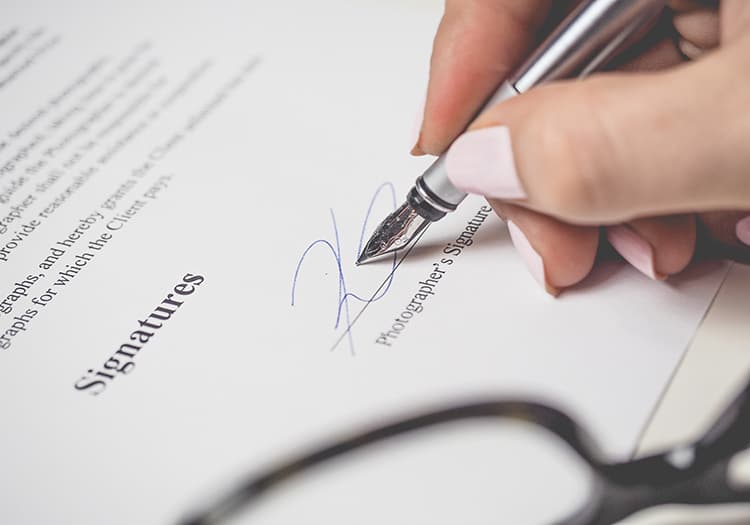Can Student Loans Be Removed From My Credit Report?
Defaulting on student loan debt is never ideal, but sometimes it’s outside of your control. It’s certainly not rare. Approximately 11.5% of borrowers with student debt default on their loans. If you make a mistake or can’t make payments because of something outside of your control, you can get the negative event removed from your credit report.
But how you’ll get it removed and how long it takes depends on what type of student loans you have.
Can student loans be removed from my credit report?

In a word, yes. It is possible to get a defaulted student loan removed from your credit report. It’s not easy, however, especially if you’ve defaulted before or you have private student loans.
If a borrower who has defaulted on a federal student loan rehabilitates the loan by making nine out of 10 on-time, consecutive, full, voluntary monthly payments, the default will be removed from the borrower’s credit history, says Mark Kantrowitz, a student loan expert at Private Student Loan Guru.
If a student loan is inaccurately reported on your credit report, you should be able to get the student loan removed from your credit report
You only get one try
Unfortunately, however, you can only take advantage of this once. If you default again on the same loans, the only way to get the second default off your credit report is to pay off the loan in full.
If you have private student loans, the process isn’t as simple. First, you’d need to attempt to pursue a debt settlement with the lender to pay less than you owe.
Borrowers who are settling a defaulted private student loan can ask for the default to be removed from their credit reports as part of the settlement agreement, says Kantrowitz.
But the lender may not be willing to do this unless you’ve been in default for a long time and they’ve given up trying to collect on the debt. Getting rid of your student loans for less than you originally owed sounds great. However, the process can destroy your credit. This will make it difficult to qualify for loans and credit cards in the future.
Keep in mind that removing a student loan in default from your credit report doesn’t necessarily mean that you no longer have to pay it. In fact, student loans are notoriously difficult to get rid of it, even in bankruptcy.
What happens if there’s an error?

Both lenders and credit bureaus make mistakes sometimes. It’s uncommon, but not entirely unheard of, to go into default on your student loans despite making regular payments.
This is why it’s essential that you regularly check your credit score and reports to catch errors before they do massive damage.
If a student loan is inaccurately reported on your credit report, you should be able to get the student loan removed from your credit report, says Kantrowitz.
In fact, the Fair Credit Reporting Act allows you to submit a dispute of an error and requires that the credit bureaus address it promptly, which is typically within 30 days.
If you notice a drop in your credit score or get a notification that you’re in default, act now. Contact the credit bureau directly to submit a dispute. Also, reach out to the servicer to request that it remove the inaccurate information.
If things get too complicated or you’re having a hard time getting the answers you need from cashadvancecompass.com $200 loan no credit check the servicer, consider working with a credit repair company. These companies can intervene on your behalf and leverage your rights to get rid of inaccurate, unverified, or unfair information.
How to avoid default in the first place
It’s possible to get a defaulted student loan removed from your credit report. But you may not have to even bother with it if you take the right steps to avoid default.
For borrowers who are struggling financially, the first thing they should do is call the loan servicer to explore their options, says Kantrowitz. You lose options if you default first.
Servicers are more willing to work with you if you talk to them when you start struggling. Don’t wait until you’ve missed several payments.
Depending on the servicer, you can potentially apply for deferment or forbearance due to financial hardship. Both of these options can temporarily suspend your monthly payments while you get back on your feet.
If you have federal student loans, you can also consider an income-driven repayment plan. These plans can reduce your monthly payment to 10% to 20% of your discretionary income, giving you some room to breathe.
Another option to consider if you can’t afford your student loans
If you struggle to make your monthly student loan payments, deferment, forbearance, and income-driven repayment plans are all good options. But they all increase the amount you’ll pay in interest over the life of the loan.
Of course, that’s much better than dealing with the consequences of a default. However, there’s one other alternative to consider early on: refinancing your student loans.
Many student loan refinancing companies can help you get a lower interest rate, lower monthly payment, or both. They can do this by offering lower interest rates than you get with some student loans and longer repayment periods.
That said, these lenders typically require a solid credit history and good income. So you may need a cosigner if your credit and financial profiles aren’t strong. If you can qualify, though, it could help alleviate some of your problems.

دیدگاهتان را بنویسید
برای نوشتن دیدگاه باید وارد بشوید.